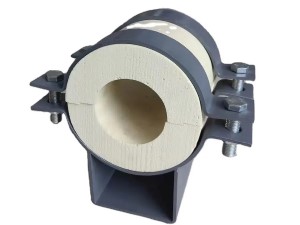The U.S. government’s decision to label China a currency manipulator after Beijing allowed the yuan to weaken past the symbolic 7-per-dollar level has raised questions about how tightly managed the currency is, and its true value.
HOW DOES CHINA MANAGE THE YUAN?
The People’s Bank of China (PBOC) allows the yuan to trade in a 2% range around a mid-point it fixes against the dollar each day. That mid-point is based on the yuan’s movement in the previous session and moves in currencies of China’s main trading partners.
It has also at times used an undefined “counter-cyclical factor” to adjust the mid-point and contain potentially big swings in sentiment.
China also maintains heavy capital controls, strict foreign investment quotas and a complex system that manages onshore trading and influences offshore yuan activity, leaving the true value of the yuan open to interpretation.
HOW HAS THE YUAN FARED AGAINST MAJOR CURRENCIES?
Global financial markets tend to focus on the yuan’s exchange rate to the U.S. dollar, and it was effectively pegged to the greenback for a number of years. It has appreciated more than 17% since being revalued in 2005.
Since the U.S.-China trade war began in April 2018, when Washington unveiled the first tariffs on some Chinese imports, the offshore yuan CNH= has tumbled 11% versus the dollar. This week, it hit a record low of 7.1397.
Since 2008, the yuan has risen 3.7% versus the dollar and jumped 35% versus the euro, but slumped 13% versus the yen.
HOW HAS THE CFETS BASKET BEHAVED IN THE PAST FEW YEARS? In late 2015, China unveiled a new trade-weighted CFETS yuan index, saying the yuan’s value should better reflect its trade and investment with multiple countries, not just the United States.Since 2017, the number of the currencies in the basket is 24 and the dollar’s weight is 22.4%. Analysts say keeping the CFETS index rangebound will ensure China isn’t disadvantaged on exchange rates versus its trading partners.Many analysts suspect Beijing is comfortable with the CFETS index swinging between 92 and 98, which makes the currency not too weak relative to partners. This week, the CFETS index fell below 92 to the lowest level on record.
DOES THE PBOC INTERVENE?
China’s central bank rarely intervenes directly in foreign exchange markets, but usually operates through state-owned banks, in addition to using money market operations and its hefty foreign exchange reserves.
The PBOC is also believed to influence offshore markets in various ways, including scheduled and off-cycle sales of yuan-denominated bills in Hong Kong, which traders say can soak up liquidity and stem speculative short-selling of the currency.
Previously, China burnt through $1 trillion of foreign exchange reserves to fight against depreciation expectations following a sharp one-off devaluation in 2015. It has shored up restrictions on capital outflows since then, while encouraging more inflows from foreign investors into Chinese stocks and bonds.
IS THE YUAN UNDERVALUED?
Based on the real effective exchange rate (REER), which measures a currency’s value weighted against those of its major trading partners after adjusting for inflation, the yuan is close to if not slightly stronger than its long-run average.
Annual data shows that in 2018 the yuan’s REER was only a tad below average during the past four years, according to the Bank of International Settlements.
Monthly data shows that at the end of June, the yuan’s REER was 4.9% above its average for the past 10 years and 13.4% above its 15-year average. In comparison, the dollar’s REER was 11.2% above its 10-year average and 10.3% above its 15-year average.
“The real effective exchange rate is one benchmark, and on that measure the yuan looks fairly valued at the moment,” said Julian Evans-Pritchard, senior China economist at Capital Economics in Singapore.





